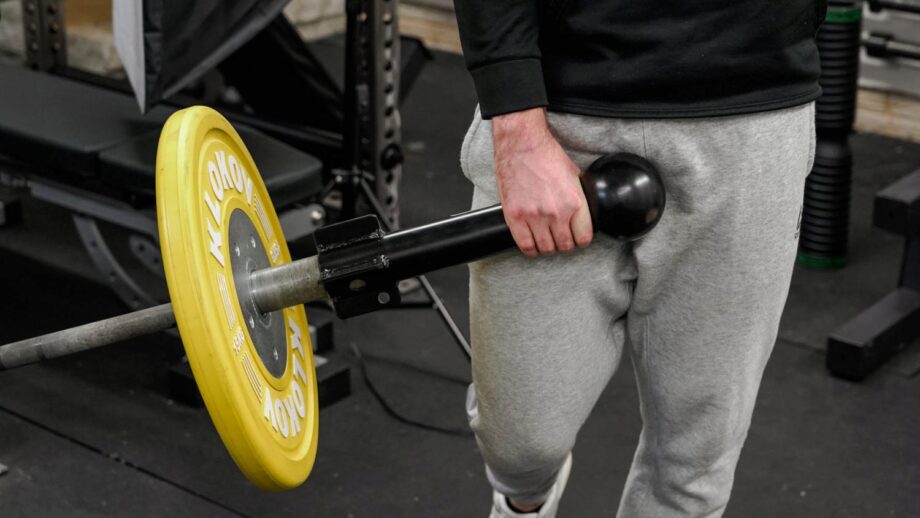We test and review fitness products based on an independent, multi-point methodology. If you use our links to purchase something, we may earn a commission. Read our disclosures.
Grip strength training is one of those out-of-sight-out-of-mind things. You don’t know you lack it until it is too late, and the barbell slips from your grasp. That’s why you need to be proactive with your grip with these grip strength exercises below—because grip strength is important for performance in and out of the gym
Many people need help seeing the correlation between the gym and how it improves their quality of life outside of vanity. But not so with grip strength. The penny drops when you can pick up heavy things around the house or when you’re opening jars. Ahh, you say, there must be something to this gym thing.
Having a strong grip is that important. Here, this certified personal trainer explains why it is important, how you can improve it, and 10 grip strength exercises so you can open all the pickle jars.
Ready to grip it and do more biceps curls than you have ever done before? Then let’s go.
Medical disclaimer: This article is intended for educational and informational purposes only. It is not intended as a substitute for medical advice. For health advice, contact a licensed healthcare provider.
Why Is Grip Strength Important?
There’s a gym phrase that has existed since the dawn of the barbell: If you can’t grip it, you can’t rip it. Grip strength and endurance are factors with any exercise where you’re supporting your body weight or a barbell or any other weighted implement in your hands.
For instance, in exercises like deadlifts, pull-ups, chin-ups, and upper-body rowing variations, if your grip gives out, there is no lifting it. Grip strength and endurance are often limiting factors in exercises requiring grip and will give out before the targeted muscle is fully exhausted. So, gains are left on the table.
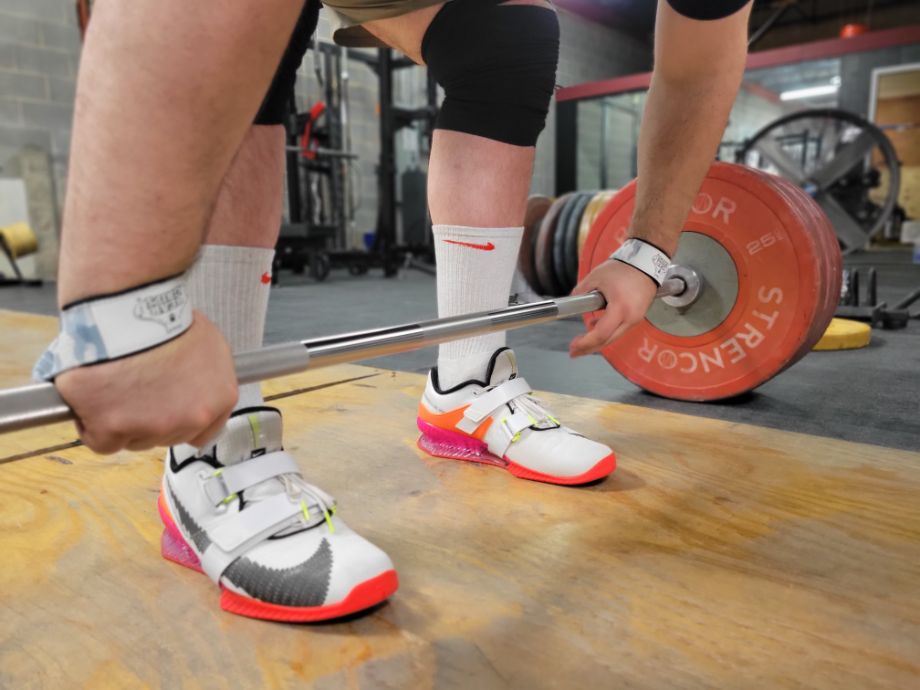
RELATED: Deadlift Variations
Building grip strength is important for your performance inside the gym and directly affects your muscle-building and fat-loss results. But it’s also a factor in your quality and quantity of life.
The Lancet published a study in 20151 covering the health outcomes of nearly 140,000 people across 17 countries. They tracked specific health measures for over four years —including grip strength.
They found that grip strength was not only “inversely associated with all-cause mortality”—every 5-kilogram (kg) decrement in grip strength was associated with a 17% risk increase.
The Lancet also found reduced grip strength associated with increased heart attacks and strokes. Grip strength is a stronger predictor of cardiovascular mortality, more than systolic blood pressure.
10 Best Grip Strength Exercises
There are several great exercises to improve grip strength, but the exercises below will improve all three types of grip strength while getting Popeye forearms without the spinach. Here are the 10 best exercises to help improve grip, build muscle, and boost total-body strength.
Hand Grippers
Why it’s great: The hand gripper trains the muscles in your hands and forearms responsible for a crushing handshake.
How to do it:
- Hold the hand gripper so it is as open as possible without slipping out of your hand.
- Close the hand gripper by forming a fist with your hand.
- Return to the starting position and reset and repeat.
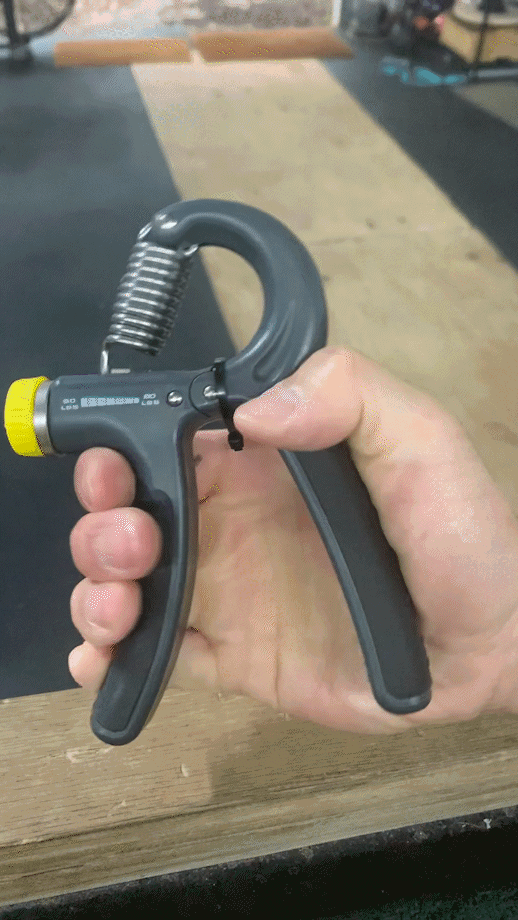
Farmer’s Carries
Why it’s great: Farmer’s carries improve your supporting grip strength, shoulder strength, and ability to withstand discomfort—otherwise known as mental toughness.
How to do it:
- Grip a pair of dumbbells between 25-50% of your body weight in each hand.
- With your shoulders down and chest up, walk the required distance.
- Repeat for the desired time or reps, then put the dumbbells back on the rack.
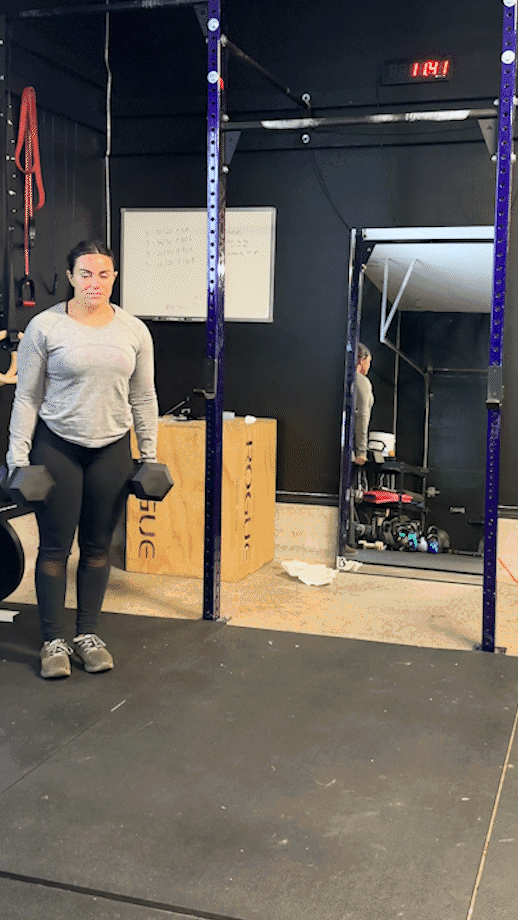
Towel Pull-Ups
Why it’s great: The towel pull-up trains your supporting and crushing grip strength while strengthening your upper back, lats, and biceps. You can use a single towel or two towels. The single towel trains your forearms, while the two-towel pull-up focuses more on your lats.
RELATED: Pull-Up Progression
How to do it:
- Hold the towel(s) midway up, using your crushing grip strength, and perform pull-up repetitions as usual.
- Ensure you keep your shoulders down and chest up until you feel your grip failing.
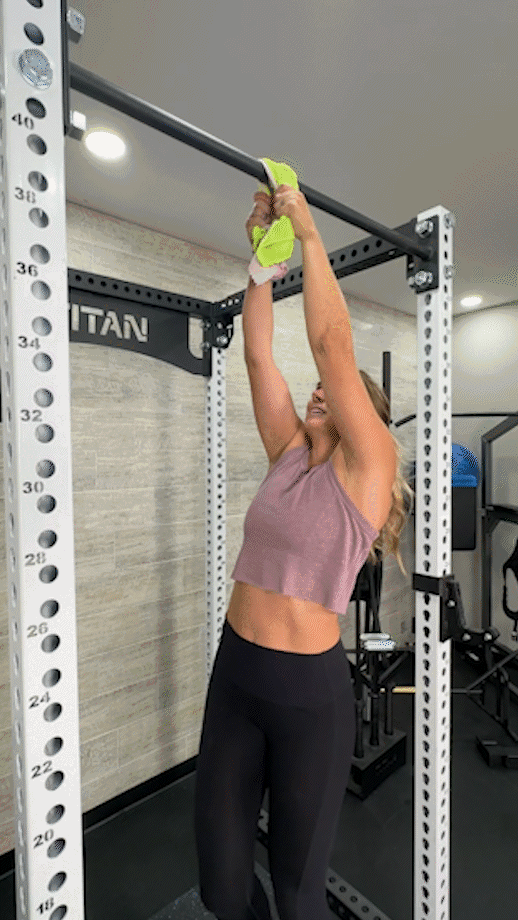
Rack Pull
Why it’s great: The reduced range of motion of the rack pull allows you to hold heavier weights for improved grip strength.
How to do it:
- Set up the barbell in the squat rack above or just below the knee.
- Then, with your shoulders down and chest up, hinge down and grip the barbell.
- Engage your upper back and pull until lockout by engaging your glutes.
- Slowly lower to the starting position and reset and repeat.
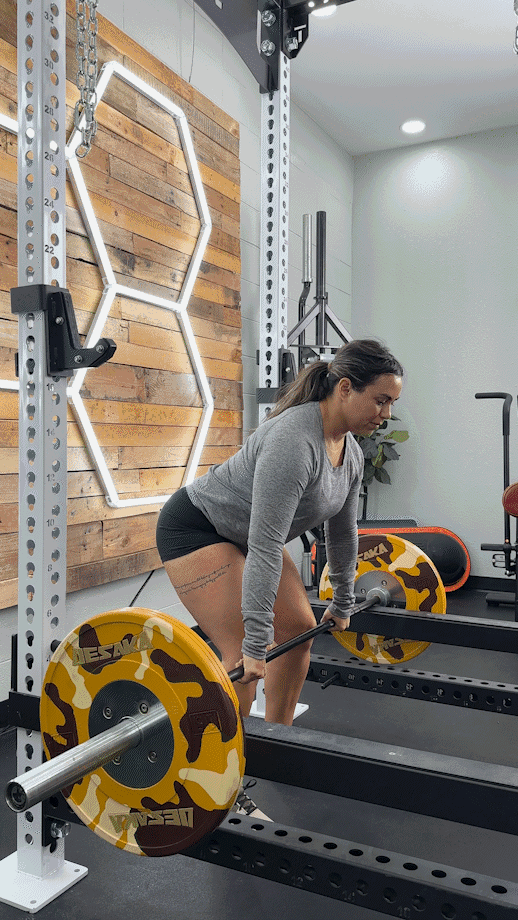
Dead Hang
Why it’s great: With the dead hang, you’re supporting your entire body weight in your hands to help improve your supporting grip strength.
How to do it:
- If you cannot reach the pull-up bar, use a weight bench to start.
- Grip the bar with an underhand or overhand grip and a shoulder-width grip, then hang and hold tight.
- When your grip fails, drop to the ground and shake your hands.
- One set until failure is usually enough.
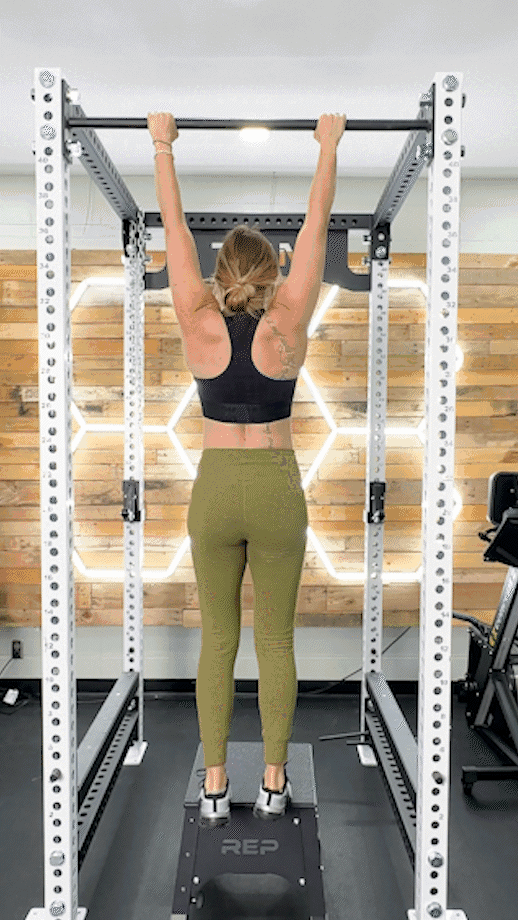
Plate Pinch
Why it’s great: Many grip-strengthening exercises focus on your crushing and supporting, but the plate pinch focuses on your pinching and finger strength.
RELATED: Olympic Weights vs Standard
How to do it:
- Grip a 25- or 45-pound weight plate, or two or more 10-pound plates with the smooth side out, and hold for time.
- Ensure you have your chest up and shoulders down to maintain good posture while gripping the plates.
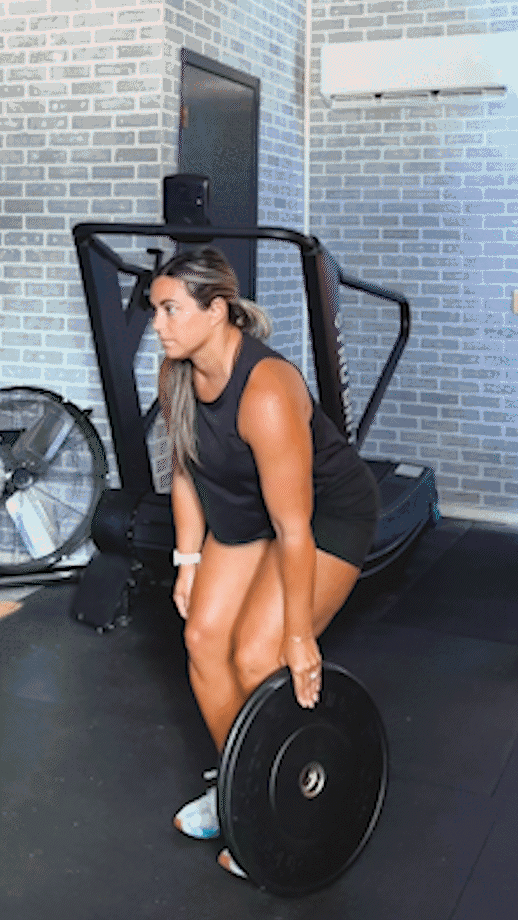
Banded Hand Extensions
Why it’s great: Banded hand extensions are similar to the plate pinch, focusing on finger strength, particularly your finger extensors, for improved grip strength.
How to do it:
- Wrap a rubber band over your fingers and thumb.
- Spread your fingers apart and hold for time or go back and forth for reps until failure.
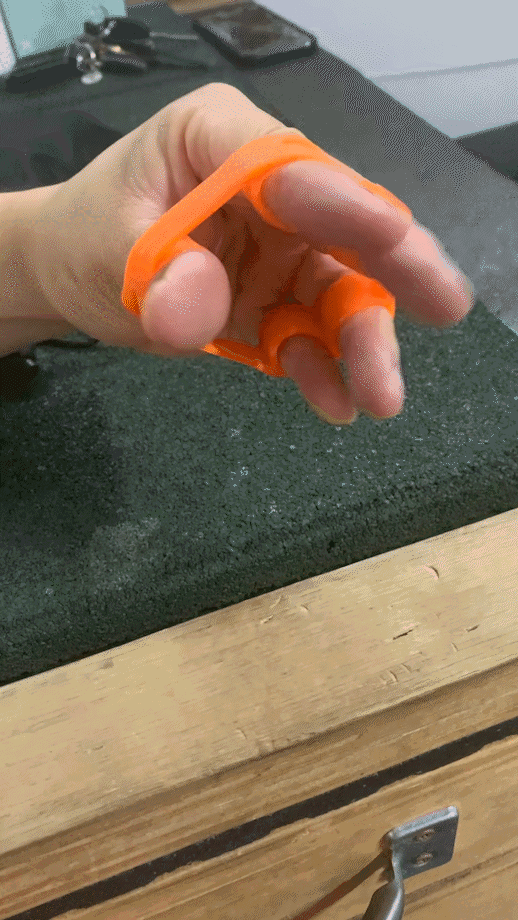
Bottoms-Up Kettlebell Carry
Why it’s great: The bottom-up kettlebell carry strengthens your crushing and supporting grip strength while trying to control an unstable load while walking.
How to do it:
- Holding a kettlebell in one hand with a clear walking path.
- Then curl the kettlebell to shoulder height with your elbow bent at 90 degrees.
- Ensure the KB horn is sitting in the meat of your hand with the wrist in neutral.
- Hold on tight and walk slowly for the specified distance.
- Then lower the weight, switch hands, reset, and repeat.
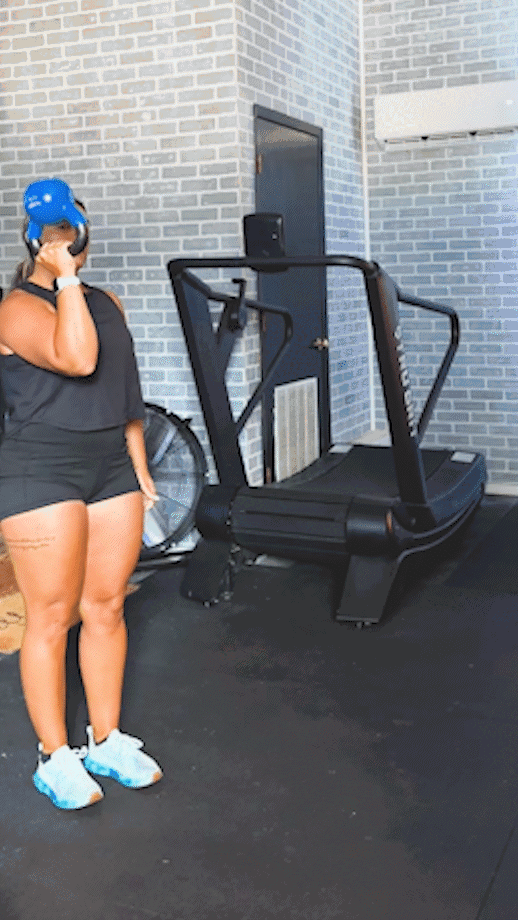
Forearm Flexor Wrist Curl
Why it’s great: The forearm flexor wrist curl targets the biggest forearm muscles for improved size and strength, which will help improve all three types of grip strength.
How to do it:
- Sit on a weight bench holding a dumbbell in one hand with the working forearm on your thigh. Have your hand handing over the edge of your knee.
- With your palm facing up and gripping the dumbbell tight, curl the dumbbell until your forearm is fully flexed.
- Return to the starting position and reset and repeat.
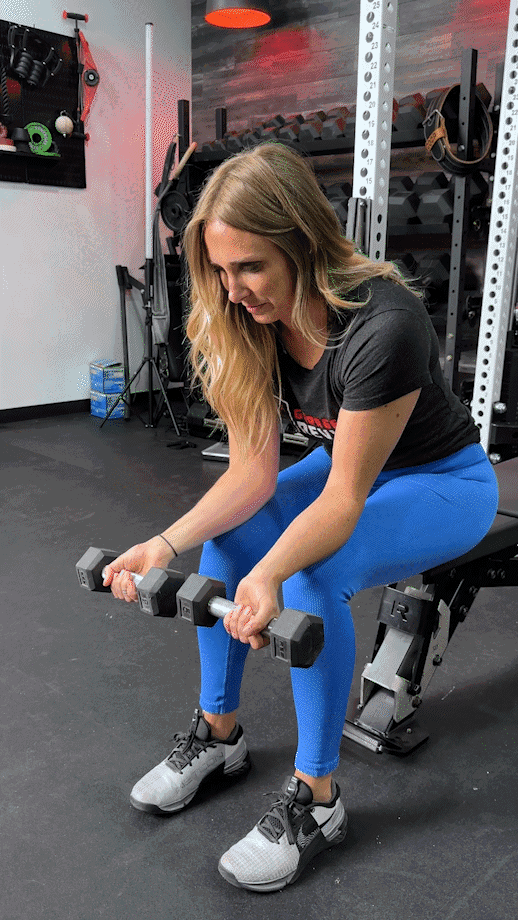
Gripedo Wrist Roller
Why it’s great: The Gripedo is a torpedo-looking barbell attachment that strengthens your forearm flexors and extensors for improved strength and size.
How to do it:
- Set up the Gripedo on a barbell at shoulder height and stand an arm’s length away from the attachment.
- Stand with your feet hip-width apart, gripping the Gripedo with your knuckles facing you.
- Roll the weight up, alternating hands until fatigued.
- Slowly reverse the weight to the floor, then repeat if you have anything left.
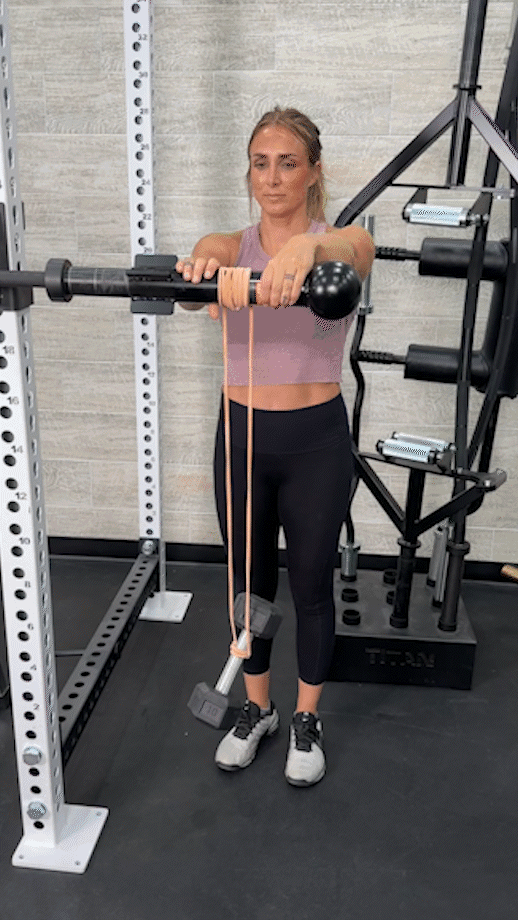
4 Ways To Improve Your Grip Strength
There are three different types of grip strength: supporting, pinching, and crushing grip strength. Supporting is when you are holding a pair of the best dumbbells for farmers’ carry variations, pinching is the strength that is needed for pinching fat baby cheeks, and crushing grip strength is necessary for a firm handshake.
Here are four ways to get a stronger grip.
Hang Out
Dead hangs from a chin-up bar are a fantastic way to strengthen your supporting grip strength because you’re supporting your entire body weight in your hands. Hanging improves your shoulder mobility and chin-up performance because you can hold on to the bar longer.
RELATED: Best Pull-Up Bar
Get Thick
Using fat grips or wrapping a towel around a barbell or dumbbell increases the diameter of what you’re gripping, making it more difficult to grasp and making your forearms and fingers work harder.
RELATED: Fat Gripz Review
Squeeze It
Like the fat grips, squeezing the dumbbell or barbell as hard as possible improves your crushing grip strength.
Pinch It
Your fingers are incredibly strong—strong enough for some people to climb cliffs while supporting their entire weight with a few fingertips. While many grip exercises use a crush grip, pinching exercises like the plate pinch train the pinch grip, strengthening the fingers and thumbs.
Muscles Targeted by Grip Strength Exercises
There are three types of muscle contractions: Isometric, where there is muscle force without movement; concentric, where the muscle shortens as it overcomes the force; and eccentric, when the muscle lengthens as it’s overcome by force. Here are the muscles and the contractions targeted by the grip strength exercise above.
Forearm Extensors
Forearm extensors are smaller muscles found on the back of your forearm. They work isometrically to keep your wrist neutral during exercise, as the plate pinch, dead hang, and bottom-up kettlebell carries. And the forearm extensors work concentrically and eccentrically during exercises like the Gripedo, towel-ups, and the hand gripper.
Forearm Flexors
The three main superficial forearm flexion muscles on the wrist’s palm side are flexor digitorum superficialis, flexor carpi ulnaris, and flexor carpi radialis. These three muscles work concentrically, eccentrically, and isometrically with all the 10 exercises above, and their size, strength, and endurance are critical for your grip strength.
RELATED: Forearm Workouts
Wrists
The wrist joint is the attachment site for many of the forearm muscles, and it’s a mobile joint that allows most of the forearm and upper arm movement to happen. The main three muscles of the wrist are the flexor carpus radialis, flexor carpus ulnaris, and palmaris longus. All three muscles work concentrically, eccentrically, and isometrically to make your grip strength happen.
Hands
The human hand is almost the perfect gripping machine, with our four fingers and long opposable thumbs allowing us to grip stuff in our hands. But the real magic lies with our fingerprints, known as papillary ridges. These are the tougher, thicker parts of the skin that allow us to grip and hold weight in our hands.
Grip Strength Exercises: Final Thoughts
Your grip strength is critical for performance in the gym, powerlifting competitions, and everyday activities—you don’t want your grip strength to be a limiting factor when pulling heavy. Having and developing decent grip strength can:
- Keep you alive longer
- Reduce your chances of cardiovascular disease
- Improve your performance in the gym with exercises that require grip
You can grip it, rip it, and make your strength exercises better by performing the 10 best grip exercises. Thats what is called a win-win.
Grip Strength Exercises: FAQs
What exercises increase grip strength?
Any exercise involving weight in your hands will improve your grip strength. It’s best to include exercises that cover all three types of grip strength, like dead hangs, farmer’s carry, plate pinches, and bottoms-up kettlebell carries.
What are good hand grip exercises?
Good hand grip strength exercises that target your hand and finger strength are the hand gripper exercise, banded hand extensions, and plate pinches. Each exercise directly targets the strength of your fingers and wrists.
How do you strengthen a weak hand grip?
Reinventing the wheel to strengthen a weak hand grip is unnecessary. Using the exercises above, ensuring you’re covering the four ways to improve grip strength, including pinching, squeezing, hanging, and fat grips, will go a long way toward improving your hand strength.
Do grip exercises actually work?
Exercises that target and improve your grip strength only work if you do. If your grip is an issue, consistently working on your grip strength in your workout routine and ensuring you’re doing more each time will strengthen your grip.
References
1. Leong DP, et al. Prospective Urban Rural Epidemiology (PURE) Study investigators. Prognostic value of grip strength: findings from the Prospective Urban Rural Epidemiology (PURE) study. Lancet. 2015 Jul 18;386(9990):266-73. doi: 10.1016/S0140-6736(14)62000-6. Epub 2015 May 13. PMID: 25982160.
Further reading

In our Transparent Labs Creatine review, a nutrition coach will let you know if this is the best creatine supplement on the market. Read more

In this iFIT troubleshooting guide, we’ll highlight some of the most common iFIT issues and how you can fix them. Read more

Including the clean and press workout into your routine may help take your power output to the next level. Here's my expert take on this dynamic exercise. Read more

Why incorporate eccentric training into your workouts? A certified personal trainer explains the benefits and how to do it. Read more

